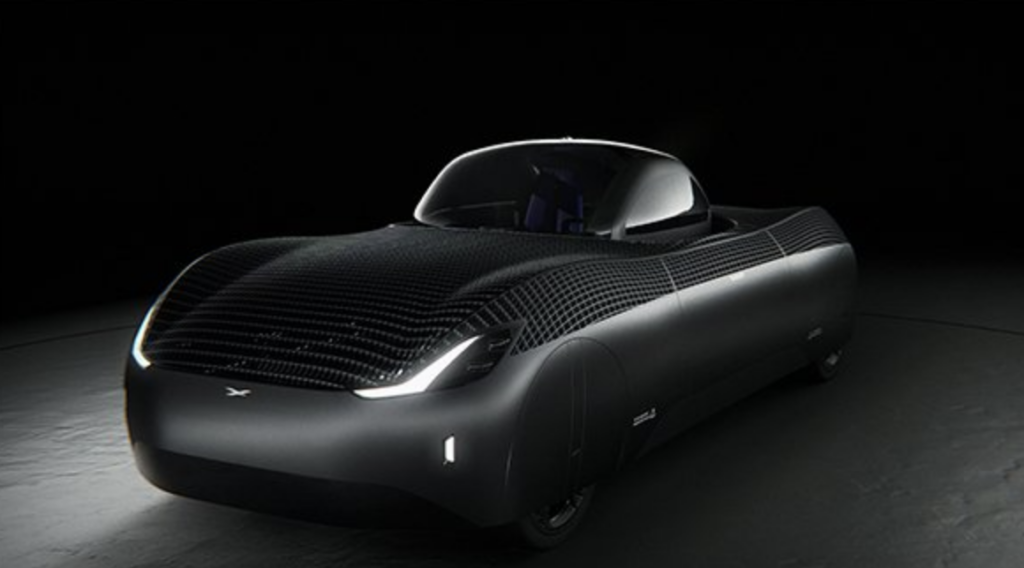There Is Now A Car That Can Transform Into A Plane?
Startup transportation company Alef revealed its Model A car that can transform into a plane.
The Jetsons mainstreamed the idea of flying cars into the American psyche in 1962, when the animated series predicted what life might be like in 2062. That date is still 40 years away, but we’re already heading towards making a driving, flying transforming car a reality. Last week, start-up company Alef revealed at a launch event that it has a flying car in development.
Called the Model A, perhaps as a nod to the first car Ford sold to the masses, Alef says their transforming car is the first true flying car. Comparing it to flying vehicle rivals such as AirCar and the Pal-V gyrocopter, Alef’s chief executive and co-founder Jim Dukhovny explained to BBC why his Model A is different. “A flying car has to be a car, which means it can drive on a regular street, and park in a regular parking space. And it also should have vertical take-off.”
Dukhovny continued, “If you require an airport to take off, what problem are you solving? And why is this a flying car?” The Model A is truly remarkable in that after its eight interior propellers provide vertical liftoff, it transforms into a biplane. Alef’s transforming car has metal mesh sides that provide the airflow the vehicle needs to morph from driving to flying.
Mid-air, the Model A turns onto its side. The two-person cockpit swivels so that passengers remain upright and forward-facing. Then the vehicle’s long side panels turn into top and bottom wings forming the classic biplane configuration.

The Model A is still in the prototype stage. As aeronautical engineer Professor Steve Wright of the University of the West of England told BBC, the path from a transforming car prototype to a working product is easily underestimated. He stated that it wouldn’t likely resemble the flying DeLorean in the movie Back to the Future.
“That isn’t how mass airborne transport is going to play out, which is a real shame,” said Professor Wright. “I really want my flying DeLorean as much as anybody does.” Professor Wright also said that the Model A’s design is “right on the ragged edge” between the abilities of physics and technology and that’s to be expected.
Although the idea of swooping into the air has crossed the mind of every person ever stuck in a traffic jam, it will likely still be a while before common use becomes a reality. Regulation, certification, and licensing of transforming cars won’t resemble an ordinary trip to the DMV. Getting permission to operate one will be significantly more complicated, much like obtaining a pilot’s license.
Government officials will also have to decide when and where they can be used. This will likely result in an expansion of the strict rules that already exist on how airspace can be used and by whom. Professor Wright thinks that personal ownership of transforming cars won’t happen, but we may be able to hire them like a taxi.
“You pull out your phone, and a robot car would draw up and it would take you to somewhere the size of a small park and the drone comes down, sets itself down, you jump in there. So in other words, you summon a drone taxi,” Prof. Wright said.
Dukhovny disagrees, saying that “early adopters” will be eager to pay the Model A’s initial $300,000 price tag because the idea of a transforming car is so appealing. He also told BBC that his goal is to start selling Alef’s flying cars in 2025. But the company’s competition isn’t just in the U.S.
Earlier this month China debuted a transforming car in Dubai. Xpeng Inc.’s X2 two-seater electric vertical take-off and landing (eVTOL) aircraft’s first public flight lasted 90 seconds through the hot desert air. With so many competitors rushing to develop personal ultralight aircraft and autonomous passenger drones, it remains to be seen whose vehicle becomes the first to reach the masses.











